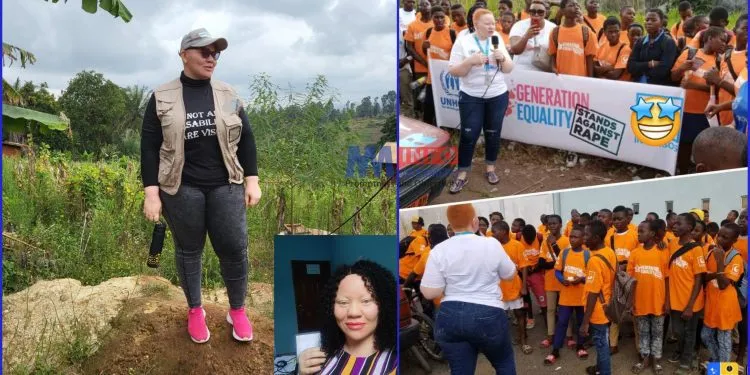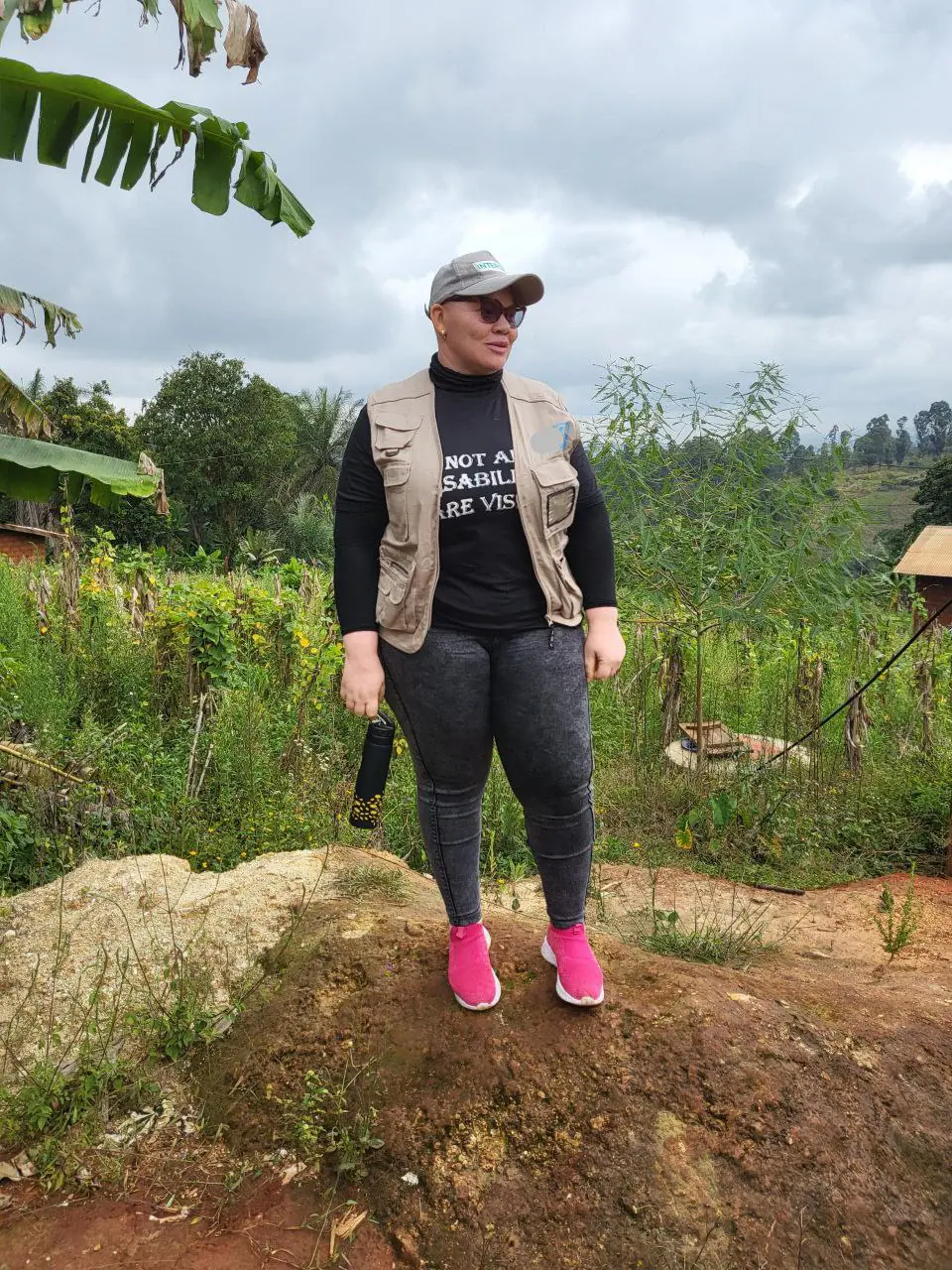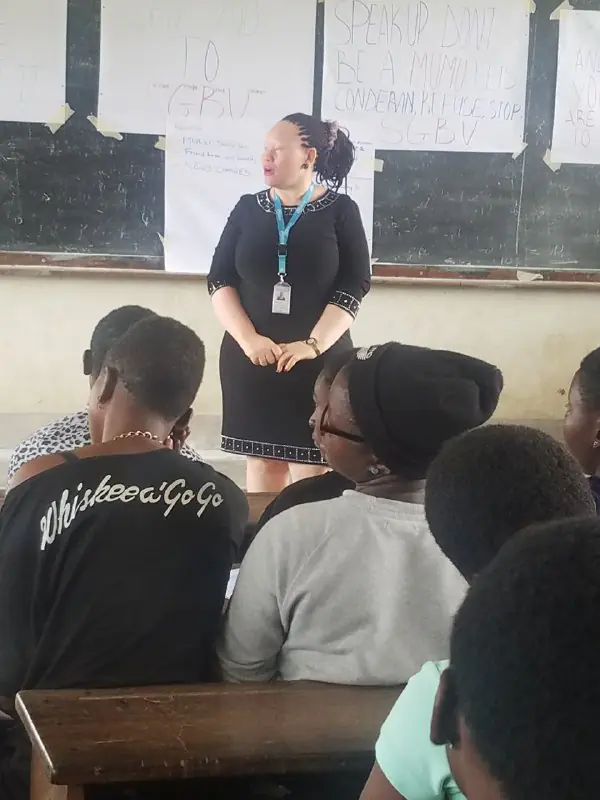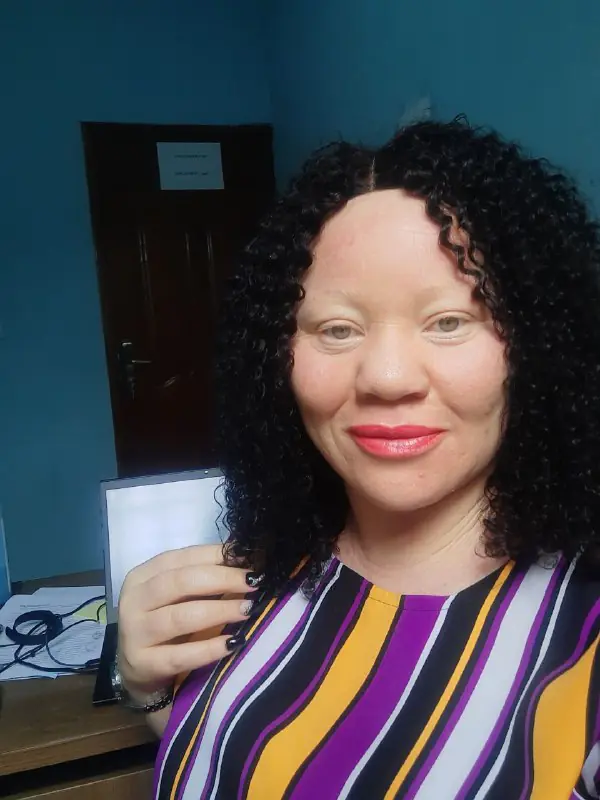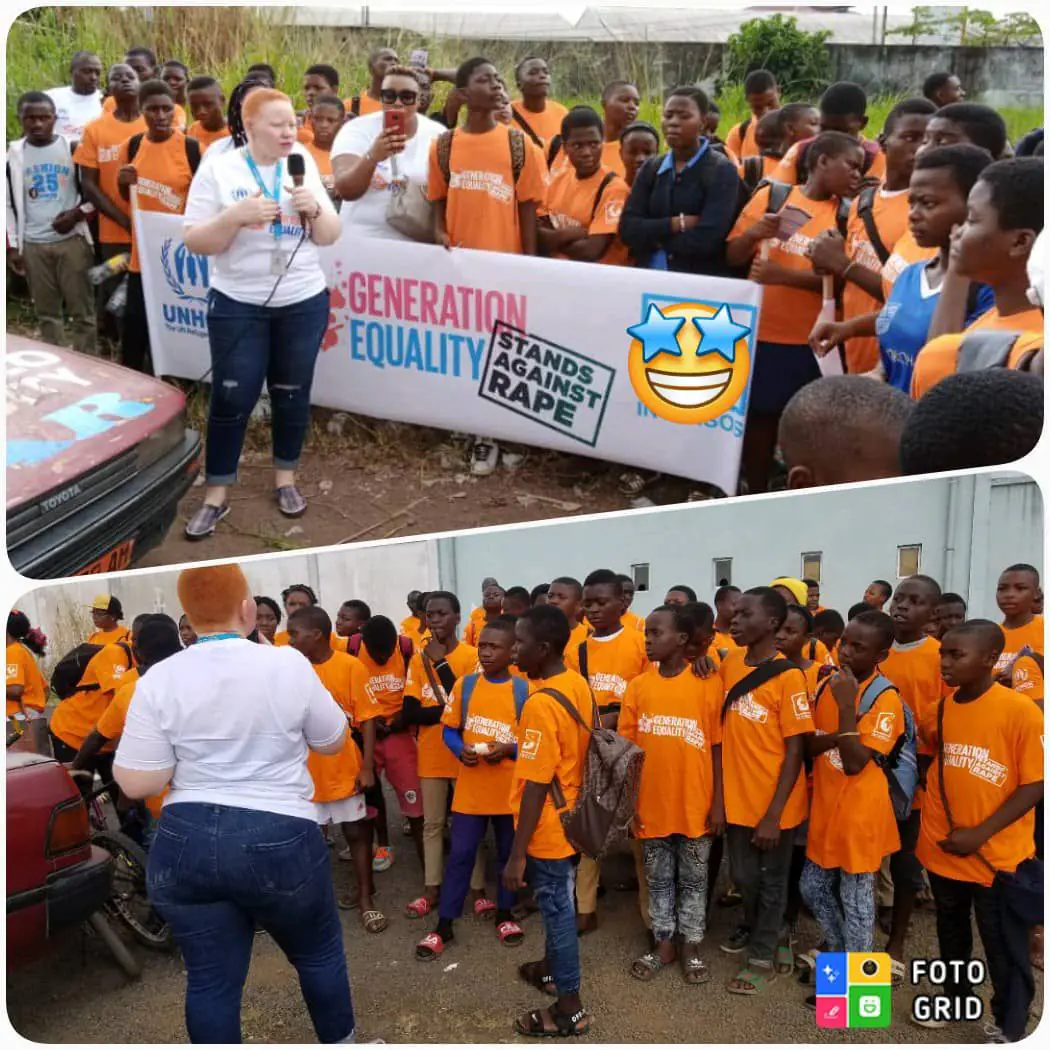On June 13, Cameroon joins the rest of the world in celebrating the International Day of Albinism under the theme “10 Years of IAAD: A Decade of Collective Progress.” As the commemorations unfold, it becomes evident that community acceptance of people living with albinism is improving compared to the past.
In special coverage, MMI highlights the journey of Melissa Longla, a gender rights advocate and humanitarian worker who has overcome stigmatisation and now champions the rights of individuals with albinism. Working in the North West and South West regions, Longla supports communities affected by the ongoing crisis and dedicates her free time to advocating for the rights of people living with albinism through community education.
Longla’s advocacy includes radio shows, interviews, social media posts, and collaborations with organizations like Sisterspeak237 to raise awareness. According to Longla, living with albinism in a community that still lacks full understanding of the condition presents significant challenges. “One has to face stigmatization and discrimination from different angles,” she explained.
In an interview with MMI, Longla shared her experiences: “People throw derogatory slang as you walk past the streets; you’re turned down from job opportunities just because you’re an albino; some families would not let their son marry you because you’re an albino; people talk down on a promotion at work, saying it was given to you because you are an albino; people would not eat what you have touched; you have thousands of men approaching you because they want to experience what it is like to date an albino…SMH, and the list goes on.”
Longla emphasized that work and schooling are particularly challenging for individuals with albinism, who often suffer from low vision. She recounted her school days when her parents arranged for her to sit close to the board to see better. At university, without such accommodations, she relied on friends’ notes.
“At work, the challenges are similar,” she said. “In my line of work, I am either on the field, working in communities, or working on my computer. Working in communities exposes me to the sun, which is the number one enemy of persons living with albinism, as constant exposure leads to severe skin burns and increases the risk of skin cancer.” To mitigate these risks, Longla uses sunscreen, wears protective clothing, and a hat.
For computer work, Longla uses low-vision aids to enhance characters and improve usability. “Computers with sensitive screens (touch screens) can be of great help in improving font size and easing the work,” she added.
Since the launch of International Albinism Awareness Day 10 years ago, significant strides have been made in demystifying albinism and improving community acceptance. Longla noted that increased awareness is reducing the stigma faced by people with albinism. This year’s theme highlights the efforts of individuals, changemakers, and governments in raising albinism awareness.
“There is still much work to be done, but the work done has led to significant progress,” Longla said. “Besides this day, the campaign continues all year long. It starts with me; it starts with you! Start by telling someone next to you what albinism is; tell them that people with albinism are as normal as every pigmented person around you; stop the negative comments; and stop the discrimination against PAW. Together, we can make society conducive for people with albinism.”
According to the UK’s NHS, people with albinism have a reduced amount of melanin or no melanin at all, affecting their coloring and eyesight. They often have white or very light blonde hair, although some have brown or red hair depending on melanin production.
In Africa, various myths surround people with albinism. Some tribes use them as sacrifices to the gods, while other communities believe albinos possess special powers or bring luck.


